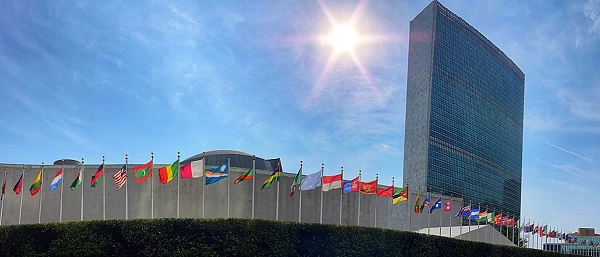MAiD
People with disabilities are vastly overrepresented in Canada’s latest assisted suicide figures

From LifeSiteNews
By Alex Schadenberg of Euthanasia Prevention Coalition
In 2023, Canada recorded over 15,300 euthanasia deaths, with disabilities, poverty, and loneliness driving decisions. Assisted suicide represented 4.7 percent of all deaths in Canada last year.
On February 6, 2024, after obtaining the euthanasia data from Alberta, Ontario, and Québec, the Euthanasia Prevention Coalition published an article stating that there were approximately 15,300 euthanasia (MAiD) deaths in Canada in 2023.
On July 8, 2024 we published an article with links to the euthanasia data from Alberta, British Columbia, Manitoba, Nova Scotia, Ontario, and Québec. We again predicted that there were about 15,300 euthanasia deaths in 2023.
READ: Canadian seniors say they were offered euthanasia when faced with increased hospice costs
On December 11, 2024, Canada’s Ministry of Health released the Fifth Annual Report on Medical Assistance in Dying which indicates that there were 15,343 reported euthanasia deaths representing 4.7 percent of all deaths in 2023.
.jpg?resize=320%2C267&ssl=1)
Why did Canada’s Ministry of Health wait until December 2024 to release the 2023 euthanasia data when the report essentially concerns numbers and data while lacking information on the actual reason for people wanting to be killed by euthanasia?
Interesting data in the report:
- Of the 15,343 reported euthanasia deaths: 95.9 percent were Track 1 deaths (the person was deemed to have a terminal condition); 4.1 percent were Track 2 deaths (the person was deemed as not having a terminal condition).
- People with disabilities accounted for 33.5 percent of the Track 1 euthanasia deaths and 58.3 percent of the Track 2 euthanasia deaths. In 2022, 27 percent of Canadians were people with one or more disabilities. People with disabilities are over-represented in Canada’s euthanasia statistics.
- 95.8 percent of those who died by euthanasia were Caucasian (White) while fewer than 1 percent were First Nations people. In 2022, 69.8 percent of Canadians euthanized were Caucasian and 5 percent were First Nations people.
What is happening in British Columbia, Ontario and Québec?
When analyzing the Fifth Annual Report we question, “What makes British Columbia, Ontario and Québec different than the rest of Canada?” In 2023, euthanasia deaths increased by 36.5 percent in Québec, 30.3 percent in Ontario, and 18 percent in British Columbia. When examining the data from the other seven provinces, the next highest rate of increase was Alberta with a 6.4 percent increase in euthanasia deaths.
Québec has the highest euthanasia rate with 5601 reported euthanasia deaths – this represents 7.3 percent of all deaths and 36.5 percent of all Canadian euthanasia deaths. Canada’s 2021 Census indicated that 23 percent of Canadians live in Québec.
We question the accuracy of the Québec euthanasia data. CBC Radio Canada reported on March 9, 2024, that the Québec government had reported that there were 5,686 reported euthanasia deaths in 2023, but the Fifth Annual report states 5,601.
The analysis of the Québec Commission on End-of-Life Care Eighth Annual Report (April 1, 2022 – March 30, 2023) by Amy Hasbrouck indicated that there were 190 euthanasia deaths that may not have been reported by the doctor or nurse practitioner who carried out the death. 190 unreported euthanasia deaths is serious.
Euthanasia for frailty was listed as a reason in 1,392 deaths, representing more than 9 percent of all euthanasia deaths. In 92 euthanasia deaths, frailty was listed as the only reason.
Euthanasia for chronic pain was listed as a reason in 933 deaths, with 23 of the deaths listing chronic pain as the only reason.
Euthanasia for dementia was listed as a reason in 241 deaths, with 106 of those deaths listing dementia as the only reason.
Similar to other jurisdictions, the reason for seeking euthanasia was highly oriented to the person’s social condition.
- 96 percent listed “Loss of ability to engage in meaningful activities,”
- 87 percent listed “Loss of ability to perform activities of daily living,”
- 70 percent listed “Loss of dignity,”
- 55 percent listed “Inadequate pain control.”
It is important to note that loneliness and isolation was listed in more than 21 percent of all euthanasia deaths representing more than 3,200 people.
People with disabilities should be concerned that more than 50 percent of those who died identified “loss of independence” and almost 50 percent listed being a perceived burden on family, friends, or care givers.
People with disabilities should also be concerned that “other conditions” was the highest identified factor for euthanasia. For people with disabilities, 46.2 percent of the Track 1 deaths were based on “other conditions” and 62.9 percent of the Track 2 deaths were based on “other conditions.” “Other conditions” is not further defined and indicates a serious concern with discrimination of people with disabilities.
We recognize another concern related to the difference in income levels for Track 1 and Track 2 euthanasia deaths. People who died by Track 2 euthanasia were more likely to have a lower income than the Track 1 deaths.
More analysis of the Fifth Annual Report needs to be done. The report includes more information than previous years’ reports but it does not examine why people are asking for euthanasia nor does it uncover deaths that may be outside of the parameters of the law.
In October 2024 the chief coroner of Ontario released a report from the Ontario MAiD Death Review Committee reporting that between 2018 and 2023 there were euthanasia deaths driven by homelessness, fear, and isolation and that poor people are at risk of coercion, indicating that Canadians with disabilities are needlessly dying by euthanasia. The data from the Ontario Death Review report indicates that in the reported time period there were at least 428 non-compliant euthanasia deaths and 25 percent of the euthanasia providers violated the law.
The Ontario MAiD Death Review report has three parts (Part 3) (Part 2) (Part 1).
The federal government needs to do a complete review of Canada’s experience with euthanasia.
Reprinted with permission from the Euthanasia Prevention Coalition.
International
Daughter convinces healthy father to die in double assisted suicide with mother

From LifeSiteNews
By Cassy Cooke
After her parents both became seriously ill and her mother wanted to undergo assisted suicide, a Washington woman convinced her father to die also.
Key takeaways
- Corinne Gregory Sharpe spoke to PEOPLE about her experience convincing her parents to undergo assisted suicide together.
- After her mother was diagnosed with aortic stenosis in her 90s, she lived for a few more years before her health began to decline. At that point, she said she wanted to die by assisted suicide.
- Her father did not have a health condition outside of having previously had a stroke; however, he was nervous to live without his wife. Sharpe convinced him of a “solution” – to kill himself alongside her mother.
- Couple assisted suicide has become romanticized by the media.
The details
Corinne Gregory Sharpe spoke with PEOPLE about her efforts to convince her father to undergo assisted suicide alongside her mother. She said her family had always been close, so when her mother became ill, her father was nervous to live without her.
Sharpe’s mother was first diagnosed with aortic stenosis in 2018 at the age of 92 and given less than two years to live if she did not undergo surgery.
“And even if she had the procedure, there was no guarantee that she was gonna live any longer,” Sharpe said. “So her attitude was sort of like, well, let’s just kind of let things go as they go.”
READ: Colorado gave over 500 people assisted suicide drugs solely for eating disorders in 2024
But Sharpe’s mother didn’t die within those two years. In fact, it was three years later that her health began to decline, only after she fell and hit her head. Shortly after that, Sharpe’s father appeared to suffer small strokes. “So now I have two parents in medical care,” Sharpe said.
Her parents were able to be at a rehabilitation facility together, but Sharpe said they were “losing the will to live,” so she brought them back home. Doctors recommended hospice, but her mother decided she wanted to undergo assisted suicide, which left her father distraught. Sharpe came up with an “interesting” solution.
“I had a very interesting, serious heart-to-heart conversation with him one evening after my mom had gone to bed,” she continued. “And he was just panicked like, ‘What happens to me if she goes first?’ That’s always been a concern of his. He couldn’t see a scenario where he would want to continue if mom was gone.”
She added, “He’s always been afraid of dying. But I think he was more afraid of being left alone. He was like, ‘Well, if she’s gonna go and I have the option to go at the same time, then I’m getting on that horse.’ So I was like, look, we’ll figure something out.”
At this point, her father was not dying, and if he suffered another stroke, doctors believed he could end up incapacitated, but not terminally ill. Yet Sharpe was able to get her father approved for assisted suicide, calling it “a race” to do so.
Sharpe spent what would be the last few weeks of her parents’ lives hosting family dinners, making them their favorite meals, and sharing memories as a way to “repay my parents for everything they’d done for me.” It sounds nice, but there’s no need for an adult child to wait until she knows her parents are dying to do such things for them.
When the drug powder arrived, Sharpe took a selfie with the delivery man and then stuck the drug on a shelf, where it feasibly could have been accessed by anyone. She then joked about choosing Friday the 13th to die, which is when her parents ultimately took the drugs – Friday, August 13, 2021.
“The counselors prepared the cocktail, we sat around and shared some private moments together. They got to sit in their own bed and hold hands with each other and talk before they were able to take the meds,” she said. “We put music on and they took the cocktail. Then we poured a glass of wine and we had a final toast. About 10 minutes after they drank it, they went to sleep.”
Zoom out
It has become increasingly common and romanticized for elderly couples to be euthanized together. This includes murder-suicides and those who opt to die together simply because they are elderly.
But the reality of assisted suicide is that it may not be as peaceful and romantic as many have been led to believe.
As Dr. Joel Zivot, an associate professor of anesthesiology and surgery at the Emory School of Medicine and an expert on “physician participation in lethal injection,” previously explained, assisted suicide can be excruciating, even if it doesn’t appear to be.
“[F]or both euthanasia and executions, paralytic drugs are used,” he wrote in an op-ed for the Spectator. “These drugs, given in high enough doses, mean that a patient cannot move a muscle, cannot express any outward or visible sign of pain. But that doesn’t mean that he or she is free from suffering.”
He added, “People who want to die deserve to know that they may end up drowning, not just falling asleep.”
Furthermore, a study in the medical journal Anaesthesia found that prolonged, painful deaths from assisted suicide and euthanasia were far from rare, with a considerable number of patients taking 30 hours to die, though some took seven days. Experiments with assisted suicide likewise have been painful, with one drug cocktail “burning patients’ mouths and throats, causing some to scream in pain.” The same drugs labeled as too inhumane to be used for lethal injection are used in assisted suicide.
The bottom line
Suicide is not dignified, peaceful, or romantic. Efforts are made to prevent suicide unless the person in question is elderly, ill, or disabled. And then, it’s made to appear noble and romantic to take your own life.
Reprinted with permission from Live Action.
Health
Colorado gave over 500 people assisted suicide drugs solely for eating disorders in 2024

Fr0m LifeSiteNews
The lawsuit says Colorado’s assisted suicide law violates federal protections by allowing physicians to prescribe lethal drugs to some disabled patients under circumstances where others would be directed to mental health care
Doctors in Colorado are pushing assisted suicide on hundreds of patients solely because they suffer from eating disorders, according to a patients’ advocate sharing the harrowing story of one such case.
Writing in the Denver Post, Patient Rights Action Fund and Institute for Patient Rights executive director Matt Vallière tells the story of his friend Jane Allen, who battled anorexia “most of her life,” who in 2018 was diagnosed with “terminal anorexia,” a relatively recent diagnosis which has been criticized as overly broad and dangerous.
Her eating disorder doctor, Jane wrote, “would ‘make an exception’ for me and ‘allow’ me to die, if that was my choice. It didn’t feel like my choice – I felt coerced and spent an incredibly agonizing months in an assisted living facility.” She eventually received the suicide drugs, but was saved by her father winning a guardianship order and having the drugs destroyed.
“I ate just enough to not die right away. And then I ate more,” Jane wrote. “I weaned off the morphine and all the other hospice drugs that kept me in such a fog. I was getting better, and then I was told that I was too much of a liability and dropped from the clinic. I moved from Colorado to Oregon. I have a job that I love, a new puppy, and a great group of friends. I’m able to fuel my body to hike and do the things I love. I’m repairing my relationship with my family, and I have a great therapist who is helping me process all of this. Things obviously aren’t perfect, and I still have hard days. But I also have balance, and flexibility, and a life that is so much more than I was told would ever be possible for me.”
Jane ultimately passed away due to complications from her years of anorexia, which Vallière wonders could have been prevented by not detouring her down the terminal anorexia route. Regardless, her story details how easily similar cases can end in suicide for people without people willing to fight to give them hope. Live Action notes that last year, Colorado saw a record number of people, 510, prescribed suicide drugs solely for dietary disorders.
“What we do know is that these laws are not so rosy as the propaganda would have you believe,” Vallière writes, adding “there has been and will be more collateral damage in people like Jane or Coloradan Mary Gossman, who was told by a nationally renowned Denver eating disorder treatment facility, ‘there’s nothing we can do for you,’ which qualified her for lethal drugs under the law. She’s in a better place now and has joined as a plaintiff in a lawsuit to overturn the law. So, I ask: how many collateral deaths are acceptable to you?”
That lawsuit says that Colorado’s so-called “medical aid-in-dying” or assisted suicide law violates federal protections by allowing physicians to prescribe lethal drugs to some disabled patients under circumstances where others would be directed to mental health care, by “assum[ing] that a request for assisted suicide is not an indication of a mental disorder, when other Colorado laws make precisely the opposite assumption for virtually everyone else.”
Twelve U.S. states plus the District of Columbia allow assisted suicide. In April, however, a bill to legalize euthanasia failed in Maryland.
As Vallière has previously argued elsewhere, current euthanasia programs in the United States constitute discrimination against patients with life-threatening conditions in violation of the Americans with Disabilities Act, as when a state will “will pay for every instance of assisted suicide” but not palliative care, “I don’t call that autonomy, I call that eugenics.”
Live Action’s Bridget Sielicki further notes that “because a paralytic is involved, a person can look peaceful, while they actually drown to death in their own bodily secretions. Experimental assisted suicide drugs have led to the ‘burning of patients’ mouths and throats, causing some to scream in pain.’ Furthermore, a study in the medical journal Anaesthesia found that a third of patients took up to 30 hours to die after ingesting assisted suicide drugs, while four percent took seven days to die.”
Support is available to talk to those struggling with thoughts of ending their lives. The Suicide & Crisis Lifeline can be reached by calling or texting 988.
-

 Business2 days ago
Business2 days agoUN, Gates Foundation push for digital ID across 50 nations by 2028
-

 COVID-192 days ago
COVID-192 days agoThe Trials of Liberty: What the Truckers Taught Canada About Power and Protest
-

 C2C Journal2 days ago
C2C Journal2 days agoCharlie Kirk and the Fragility of Civic Peace
-

 International1 day ago
International1 day agoPoland’s president signs new zero income tax law for parents with two children
-

 Automotive1 day ago
Automotive1 day ago$15 Billion, Zero Assurances: Stellantis Abandons Brampton as Trudeau-Era Green Deal Collapses
-

 Business24 hours ago
Business24 hours agoTrump Admin Blows Up UN ‘Global Green New Scam’ Tax Push, Forcing Pullback
-

 Business24 hours ago
Business24 hours agoTrump Blocks UN’s Back Door Carbon Tax
-

 National1 day ago
National1 day agoPoilievre accuses Canada’s top police force of ‘covering up’ alleged Trudeau crimes




